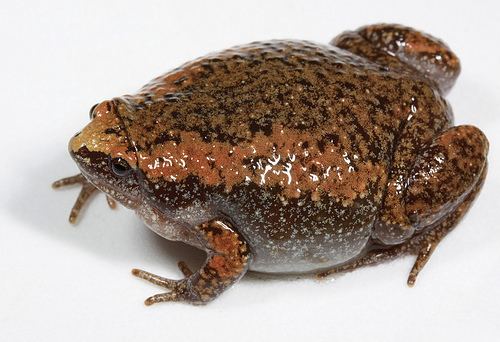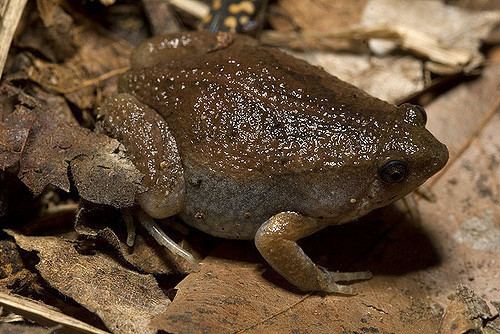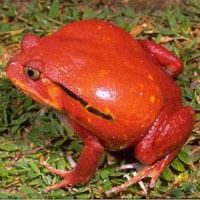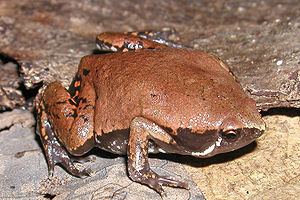Order Anura Scientific name Microhylidae Rank Family | Phylum Chordata Suborder Neobatrachia Higher classification Microhyloidea | |
 | ||
Lower classifications | ||
The Microhylidae, commonly known as narrow-mouthed frogs, are a geographically widespread family of frogs. The 584 species are in 61 genera and 11 subfamilies, which is the largest number of genera of any frog family.
Contents

Evolution

A molecular phylogenetic study by van der Meijden, et. al (2007) has estimated the initial internal divergence of the Microhylidae family to have taken place about 66 millions years old, or immediately after the Cretaceous extinction event. The most recent common ancestor of the Microhylidae and their closest ranoid relatives is estimated to have lived 116 million years ago in Gondwana.
Description

As suggested by their name, microhylids are mostly small frogs. Many species are below 1.5 cm (0.59 in) in length, although some species are as large as 9 cm (3.5 in). They can be arboreal or terrestrial, and some even live close to water. The ground-dwellers are often found under leaf litter within forests, occasionally venturing out at night to hunt. The two main shapes for the microhylids are wide bodies and narrow mouths and normal frog proportions. Those with narrow mouths generally eat termites and ants, and the others have diets typical of most frogs. Egg-laying habits are highly varied.
Reproduction

The microhylids of New Guinea and Australia completely bypass the tadpole stage, with direct development from egg to frog. The arboreal species can therefore lay the eggs within the trees, and never need venture to the ground. Where species do have tadpoles, these almost always lack the teeth or horny beaks typical of the tadpoles of other families.
Anatomy

The skull has paired palatines and frontoparietals. The facial nerve passes through the anterior acoustic foramen in the auditory capsule; the trigeminal and facial nerve ganglia are fused to form a prootic ganglion. The eight (or seven) presacral holochordal vertebrae are all procoelous except for a biconcave surface on last presacral. The pectoral girdle is firmisternal and some show reduced clavicle and procoracoids. The terminal phalanges are blunt, pointed, or T-shaped. The tadpole lacks keratinized mouth parts and has a large spiracular chamber emptied by a caudomedial spiracle.
Taxonomy
Range
Frogs from the Microhylidae occur throughout the tropical and warm temperate regions of North America, South America, Africa, eastern India, Sri Lanka, Southeast Asia, New Guinea, and Australia. Although most are found in tropical or subtropical regions, a few species can be found in arid or nontropical areas. They are the majority of frog species in New Guinea and Madagascar.
The ranges of each subfamily are:
